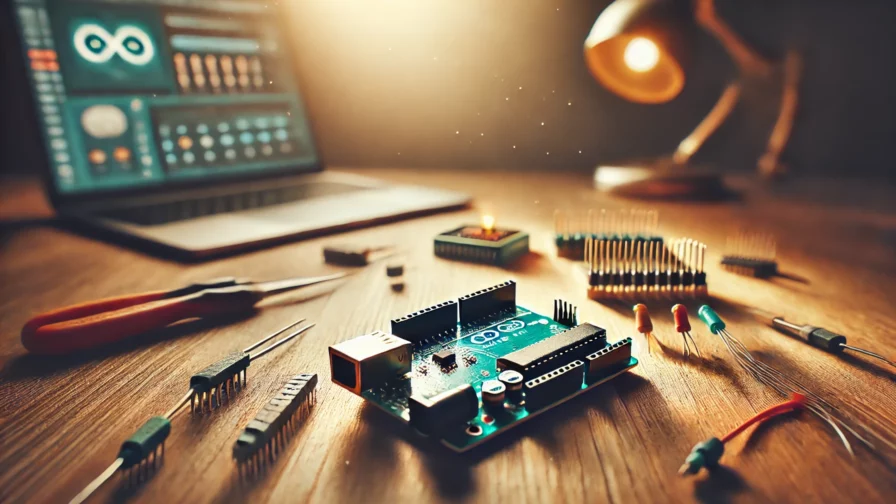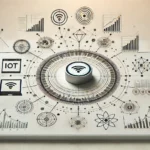
Codemotion’s mission is to give space to those who create innovation and share knowledge, so I couldn’t be happier to announce that on Tuesday, October 14, at Codemotion Milan we will host Massimo Banzi.
His talk “Open Source, Open Innovation: Lessons Learned from 20 years of Building Arduino” promises to be a true source of inspiration, capable of showing us not only lessons from the past but also a clear vision of what lies ahead in the coming years.
And speaking of Arduino, before his talk it’s worth taking a look back at its history: from a small project born in Italy to becoming a global reference point for millions of developers and creatives…
A Roman summer
I think it was 2010, during a pretty hot Roman summer. Deprived of events like film festivals, book fairs, and political parties, I received an invitation to attend a series of improvised tech talks in a community center.
It must have been a rare planetary alignment to make me take the scooter, especially since everyone knows community centers keep their own schedule—if they say something starts at 9, you can arrive a couple of hours late and still be early.
Going alone to places like that was always risky: people might take you for an infiltrator. You could say you were a conscientious objector, but they’d still glare at you, and someone might even spit on the ground as you walked by.
So the priority was to quickly reach the room, grab a chair with your back covered, and never talk to anyone.
After the first talk, though, I relaxed a bit. A boy of barely 18 started explaining lock-picking techniques with impressive skill and detail. Panic set in when I remembered my scooter was chained to a pole with a lock that could probably be opened with a hairpin.
At that point, I was less happy to be there. But the second speaker completely blew me away: for the first time I saw an Arduino, and all the magic it could do with LEDs, lightbulbs, and washing machine motors from all sorts of brands.
It was love at first sight. From that moment, I began a journey of no return, one that still makes me think of using the little board with any device I come across.
When it comes to democratizing technology, few names have had the impact of Arduino. Born almost by chance in an Italian academic context (though its name came from a bar), it quickly became a global symbol of the maker movement, an educational standard for teaching electronics and programming, and today an industrial platform with a focus on IoT, AI, and automation. Let’s retrace the key milestones of this adventure.
The origins: Ivrea and the idea of democratizing hardware
The story begins in the early 2000s at the Interaction Design Institute in Ivrea. There, a group of researchers and teachers led by Massimo Banzi had a concrete problem: how to give design students—often lacking a technical background—a simple tool to prototype interactive devices?
The answer came from combining low-cost microcontrollers with an easy-to-learn programming language.
In 2005, Banzi discussed with David Cuartielles, a Spanish engineer visiting Ivrea, the difficulties students faced with microcontrollers. They decided to design a different board and asked David Mellis, Banzi’s student, to take care of the programming language. Mellis finished the code in two days; within three more the board was ready.
It was an instant success among students, who—with no programming background—were able to build small projects: sensors that reacted, blinking lights, motors coming to life. The next step was natural: together with Gianluca Martino, the group published the electronic schematics online and invested €3,000 to produce the first batch of boards.
Banzi recalls those days in many interviews: “We made 200 copies, and my school bought 50. We had no idea how to sell the other 150. We thought we wouldn’t succeed.” But word spread among designers worldwide, and within a few months orders arrived for hundreds more Arduino boards.
The community boom and the Arduino Uno icon
Between 2008 and 2010, Arduino shifted from an academic project to a global phenomenon. The Arduino Uno, launched in 2010, became the go-to reference for millions of students, hobbyists, and makers.
The idea was simple yet revolutionary: low-cost documented hardware, clear examples, and a fast-growing community. No more need for deep electronics expertise to light up an LED or build a small robot—just a USB cable and a few lines of code.
The international community contributed library after library, extending possibilities to sensors, actuators, motors, wireless communication. Arduino was becoming the de facto standard for prototyping.
The Maker era and cultural impact
Arduino also became the beating heart of the Maker movement. From FabLabs worldwide to Maker Faires and Arduino Days—the first I attended was in 2012 at CNR in Rome, organized by DiScienza. There I saw top researchers mounting ABS on RC cars, a fake fish guiding real fish, a remote-controlled deminer, and a satellite the size of a shoebox.
The board became a cultural icon, inspiring everyone from artists to aerospace engineers.
It wasn’t just electronics: it was a symbol of shared creativity, of “learning by doing,” of the possibility for anyone to build technology, not just consume it.
In parallel, Arduino entered schools and universities, embedding itself in STEM curricula and becoming the perfect tool to introduce students to technology. Codemotion also played its part with the Kids project, where Massimo Avvisati surely inspired many young curious minds to pursue electronics with nanobots and robotic painting contests.
In Rome, we founded one of the first Arduino User Groups, with probes, 3D printers, drones, and plenty of startups baptized with beers generously offered by Fusolab.
Challenges and maturity: from split branding to Arduino Pro
Like every success story, Arduino also faced tough times. In 2015, a trademark dispute split the community into two entities: Arduino.cc and Arduino.org. This fracture risked weakening the project but eventually resolved into a stronger governance.
Meanwhile, the platform evolved. Beyond the classic AVR-based boards came more powerful ARM ones, Internet-connected solutions (Arduino Yun, MKR series), and libraries for IoT.
From 2020 onwards, Arduino Pro took shape: a line for professional developers and industry. With boards like Portenta H7, Nicla Sense, and Giga R1, Arduino positioned itself in embedded systems and advanced sensing—while keeping its open philosophy and ease of use.
Timeline of the most significant products
- 2005 – Arduino Serial: the first board
- 2006–2007 – Arduino NG and Diecimila: the first steps of the community
- 2009–2010 – Arduino Duemilanove and Uno: global explosion
- 2012 – Arduino Due: the first ARM board
- 2014 – Arduino Yun and Zero: opening to Linux and 32-bit
- 2016 – MKR1000: the IoT breakthrough
- 2019 – Nano Every and Nano 33 IoT: miniaturization and connectivity
- 2020 – Portenta H7: start of the Pro line
- 2021 – Nicla Sense: edge computing and AI
- 2023 – Giga R1 WiFi: power and versatility
- 2024 – Strengthened Arduino Cloud with more integrated tools for rapid prototyping and IoT deployment
Today and tomorrow
Today Arduino looks to the future as fertile ground to keep combining simplicity with innovation.
New boards for distributed artificial intelligence open a world where even the smallest microcontrollers can learn and react. The Pro line demonstrates the maturity of a platform that, born as an educational tool, now thrives in demanding industrial contexts—from robotics to precision agriculture.
At the same time, Arduino remains a crucial tool in education: the universal language through which generations will learn to design and bring ideas to life. Collaborations with global cloud and hardware leaders are expanding what’s possible.
Perhaps the most fascinating challenge ahead is sustainability. With distributed sensors and low-power solutions, Arduino can help monitor the environment, manage resources better, and imagine technologies that serve a more livable planet.
In this balance between accessibility and cutting-edge, education and industry, innovation and responsibility, lies the future of Arduino. Embedded AI is already revolutionizing electronics, enabling complex operations with limited computational resources.
From a bar in Ivrea to the factories of the future
Arduino has traveled a surprising road—from a teaching tool to a cultural phenomenon, to a recognized industrial player. Its true strength, however, lies in the global community that keeps innovating, sharing, and building together.
The future of Arduino will be made of AI, IoT, and sustainability, but also of the same philosophy that made it great: making technology accessible to everyone.

